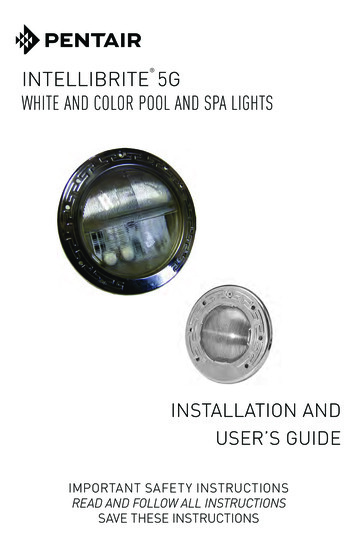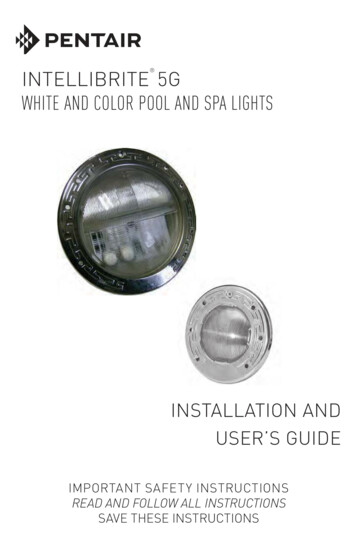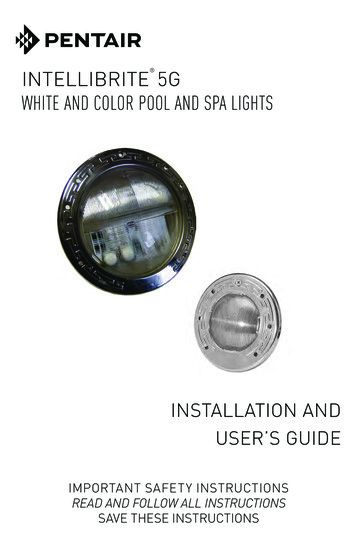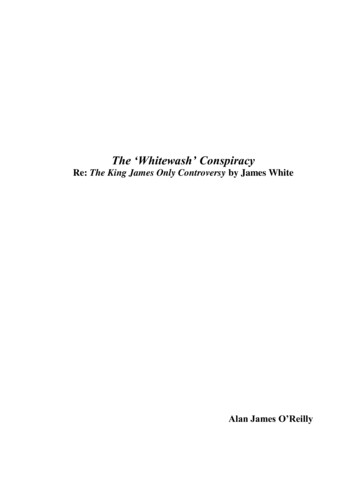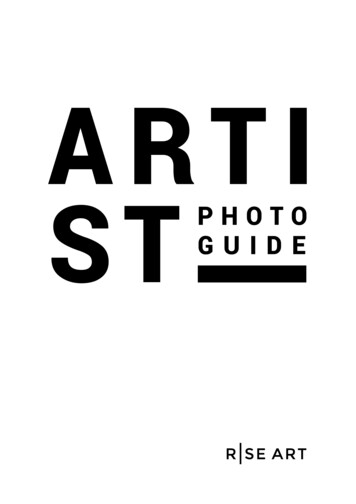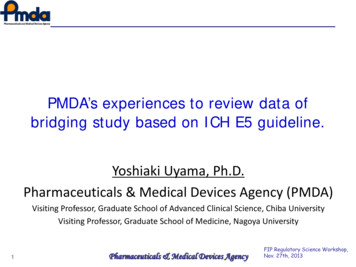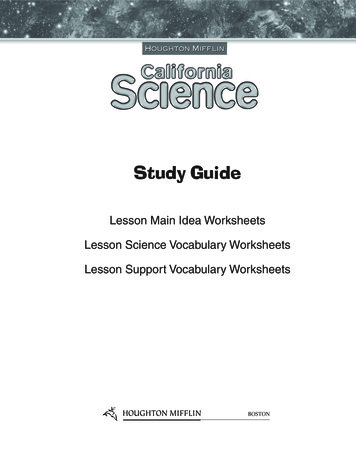
Transcription
Study GuideLesson Main Idea WorksheetsLesson Science Vocabulary WorksheetsLesson Support Vocabulary Worksheets
IMPORTANT NOTICEABOUT COPYING PAGES WITH BLUE ANNOTATIONSThe blue annotations that appear in this book are printed in nonreproducibleblue ink. These annotations should not appear when pages are copied on anormal setting. Some machines may need to be adjusted to a lighter settingso that the annotations do not appear. The annotations most likely will showwhen pages are copied on a dark setting.Copyright by Houghton Mifflin Company. All rights reserved.Permission is hereby granted to teachers to reprint or photocopy in classroom quantities the pages or sheetsin this work that carry a Houghton Mifflin copyright notice. These pages are designed to be reproduced byteachers for use in their classes with accompanying Houghton Mifflin material, provided each copy madeshows the copyright notice. Such copies may not be sold and further distribution is expressly prohibited.Except as authorized above, prior written permission must be obtained from Houghton Mifflin Company toreproduce or transmit this work or portions thereof in any form or by any electronic or mechanical means,including any information storage or retrieval system, unless expressly permitted by federal copyright law.Address inquiries to School Permissions, Houghton Mifflin Company, 222 Berkeley Street, Boston, MA 02116.Printed in the U.S.A.ISBN 13: 978-0-618-72530-4ISBN 10: 0-618-72530-X1 2 3 4 5 6 7 8 9 EB 14 13 12 11 10 09 08 07 06
ContentsTo the Teacher . . . . . . . . . . . . . . . . . . . . . . . . . . . . . . . . . . . . . . . . . . 1Unit A Systems in Living ThingsChapter 1 CellsLesson 1 . . . . . . . . . . . . . . . . . . . . . . . . . . . . . . . . . . . . . . . . . . . . . . 2Lesson 2 . . . . . . . . . . . . . . . . . . . . . . . . . . . . . . . . . . . . . . . . . . . . . . 6Lesson 3 . . . . . . . . . . . . . . . . . . . . . . . . . . . . . . . . . . . . . . . . . . . . . 10Chapter 2 Plant SystemsLesson 1 . . . . . . . . . . . . . . . . . . . . . . . . . . . . . . . . . . . . . . . . . . . . . 14Lesson 2 . . . . . . . . . . . . . . . . . . . . . . . . . . . . . . . . . . . . . . . . . . . . . 18Chapter 3 Human Body SystemsLesson 1 . . . . . . . . . . . . . . . . . . . . . . . . . . . . . . . . . . . . . . . . . . . . . 22Lesson 2 . . . . . . . . . . . . . . . . . . . . . . . . . . . . . . . . . . . . . . . . . . . . . 26Lesson 3 . . . . . . . . . . . . . . . . . . . . . . . . . . . . . . . . . . . . . . . . . . . . . 30Unit B Water on EarthChapter 4 Water ResourcesLesson 1 . . . . . . . . . . . . . . . . . . . . . . . . . . . . . . . . . . . . . . . . . . . . . 34Lesson 2 . . . . . . . . . . . . . . . . . . . . . . . . . . . . . . . . . . . . . . . . . . . . . 38Lesson 3 . . . . . . . . . . . . . . . . . . . . . . . . . . . . . . . . . . . . . . . . . . . . . 42Chapter 5 The Water CycleLesson 1 . . . . . . . . . . . . . . . . . . . . . . . . . . . . . . . . . . . . . . . . . . . . . 46Lesson 2 . . . . . . . . . . . . . . . . . . . . . . . . . . . . . . . . . . . . . . . . . . . . . 50Lesson 3 . . . . . . . . . . . . . . . . . . . . . . . . . . . . . . . . . . . . . . . . . . . . . 54Unit C Weather and the Solar SystemChapter 6 WeatherLesson 1Lesson 2Lesson 3Lesson 4.58626670Chapter 7 The Solar SystemLesson 1Lesson 2Lesson 3Lesson 4.iii74788286
Unit D Elements and Their CombinationsChapter 8 Atoms and ElementsLesson 1 . . . . . . . . . . . . . . . . . . . . . . . . . . . . . . . . . . . . . . . . . . . . . 90Lesson 2 . . . . . . . . . . . . . . . . . . . . . . . . . . . . . . . . . . . . . . . . . . . . . 94Lesson 3 . . . . . . . . . . . . . . . . . . . . . . . . . . . . . . . . . . . . . . . . . . . . . 98Chapter 9 Chemical CompoundsLesson 1 . . . . . . . . . . . . . . . . . . . . . . . . . . . . . . . . . . . . . . . . . . . . 102Lesson 2 . . . . . . . . . . . . . . . . . . . . . . . . . . . . . . . . . . . . . . . . . . . . 106Lesson 3 . . . . . . . . . . . . . . . . . . . . . . . . . . . . . . . . . . . . . . . . . . . . 110Chapter 10 Characteristics of MatterLesson 1Lesson 2Lesson 3Lesson 4.iv114118122126
To the TeacherUse this Study Guide with each lesson of Houghton Mifflin Science,California Edition. This Study Guide provides a variety of activities thathelp students check their understanding of each lesson’s main idea andpractice using the lesson’s vocabulary.Main IdeaMain Idea pages provide reinforcement for the core lesson content. A mainidea statement is followed by three or four sentences that tell the detailsof the lesson’s main idea. These details outline the main idea providingscaffolding for students as they complete the interactive activities andstrengthen their understanding of key lesson content. These activities mayalso be used to review and prepare for tests.Science VocabularyThe Science Vocabulary page of each lesson reinforces key sciencevocabulary words while helping students access lesson content. The keyscience vocabulary words are listed on the first Learn by Reading page ofeach lesson in the student’s textbook. All of the key vocabulary words ina lesson are covered in interactive activities designed to offer meaningfulpractice using these science words.Support VocabularyThe words found on the Support Vocabulary page have high general utilityacross the curriculum. These words are important to understanding thecontent of the lesson, but are not defined in the text. A glossary appearson the page for reference as students complete the activities. The SupportVocabulary page gives all students a way to work with everyday words thatprovide meaning for science concepts.Homework activities allow students an opportunity to demonstrate theirunderstanding of the important concepts and key science vocabulary ineach chapter.Vocabulary Skill practice addresses the Vocabulary Skill presentedin the Vocabulary Preview of each chapter as well as other grade-levelvocabulary skills.1
NameA.1.1Main IdeaDateWhat Are the Parts of a Cell?Main Idea Cells are the basic building blocks of living things. Cellscontain special structures to transport cell materials. All living things are made of cells. Cells are the basic unit of allliving things. All cells come from other cells. All living things depend on cells to carry out the basic functionsof life. Cells are made up of organelles that perform specific functions.A. Use the words from the box to complete the diagram ofa plant cell.cell membrane cell wall cytoplasmlysosomenucleus Golgi apparatusendoplasmic reticulumvacuolecell membranevacuolecell wallcytoplasmlysosomeGolgi apparatusnucleusendoplasmic reticulumStudy GuideCopyright Houghton Mifflin Company. All rights reserved.2Use with pages 6 –13
NameA.1.1Main IdeaDateWhat Are the Parts of a Cell?B. Complete the sentences comparing the similarities anddifferences between plant and animal cells.1. Plant cells make their own food, but animals take in their food byeating other living things .2. While the cells of both plants and animals are surrounded bya thin, flexible, only plant cells have acell membrane, a rigid outer layer for protection andcell wallsupport.3. Both plant cells and animal cells store water, food, andwaste in; animal cells may havevacuolesvacuoles, while plant cells often haveseveralone large, central vacuole.4.help cells break down nutrients and oldLysosomescell parts and are common incells butanimalrare incells.plant5., containing pigments that absorbChloroplastssunlight, are found incells but not inplantcells.animalC. Add a word to each group. Then write a sentence thatdescribes the group.lysosomes, vacuoles,ribosomesLysosomes, vacuoles, and ribosomes are all organelles.energy, support,reproductionEnergy, support, and reproduction are all basic needs of cells.bacteria, yeast,algaeBacteria, yeast, and many kinds of algae are all single cellorganisms.Study GuideCopyright Houghton Mifflin Company. All rights reserved.3Use with pages 6 –13
NameDateA.1.1Science VocabularyWhat Are the Parts of a Cell?cellnucleuscytoplasmorganelleMatch the words from the box to each description. The wordswill be used more than mnucleuscellorganellethe basic unit of a living organisma small structure in cells that performs aspecific functioncomes from another celldirects the activities of a cellthick fluid between the nucleus and the cellmembranecarries out the functions of lifesurrounds lysosomes, vacuoles, and othercell partsstores DNAcan make a copy of itselfa ribosome is one of theseHomework: A mnemonic is a device such as a pattern of letters,words, or ideas that assists in remembering something. For example:Chloroplasts are filled with chlorophyll. Create a mnemonic to helpyou remember the name and function of a cell part or an organelle.Study GuideCopyright Houghton Mifflin Company. All rights reserved.4Use with pages 6 –13
NameA.1.1Support VocabularyDateWhat Are the Parts of a mentproteinsdecision or opinion reached by reasoningproper work, normal action or usea thin soft layer of tissue that lines or covers somethinga living thing formed of separate parts that worktogether to carry on the various processes of lifesubstance that occurs in and colors the tissues ofa living thingcomplex chemical compounds that make up theparts of cells and allow the cell to perform chemicalreactionsComplete each sentence to tell about cells.1. Cells are the building blocks of every living2. Every organelle has a specific.organismfunction.3. The Golgi apparatus receives and processes.proteins4. Thepigmentgreen color.chlorophyll gives plants their5. Food, water, and gases enter cells through the cell.membrane6. In the late 1800s, scientists made acells come from other cells.conclusionthatVocabulary Skill:Word PartsIn the word multicellular, the prefix multi- means “many,” andthe suffix -ular indicates the word is an adjective. Based on thisinformation, write a definition for the word.Sample response: Multicellular means “having or consisting ofmany cells.”Study GuideCopyright Houghton Mifflin Company. All rights reserved.5Use with pages 6–13
NameA.1.2Main IdeaDateHow Do Cells Make and Use Energy?Main Idea To get energy, plant and animal cells break down sugar,releasing water and carbon dioxide. All living things require energy to survive. Cells break down glucose and capture its energy in a processcalled cellular respiration. Cells need energy to move, make proteins, divide, and transportmaterials.A. Complete the sentences to tell how cells use energy.1. Plants get energy from food they make for themselves. Animals.get energy fromfood they take in from the outside2. In order to acquire glucose, some animals eat plants. Otheranimals eat.plant-eaters3. Energy for a flashlight is stored in a battery. Energy for a cell isstored in.ATP molecules4. Animals are able to store glucose. However, animals cannot store.oxygen and carbon dioxide5. When animals breathe in, they inhale oxygen, which isrequired for cellular respiration. When animals breathe out,they exhale, which iscarbon dioxide.a waste product of cellular respiration6. Some proteins allow cells to control the chemical reactionsinside. Other proteins provide structure and support.for organisms7. In passive transport, materials move from areas of highconcentration to areas of low concentration. In active transport,materials move from areas of low concentration.to areas of high concentrationStudy GuideCopyright Houghton Mifflin Company. All rights reserved.6Use with pages 16 –23
NameA.1.2Main IdeaDateHow Do Cells Make and Use Energy?B. Complete the diagram to describe cellular respiration.Glucose andA chemicalenter a cell.oxygenoccurs.reactionWater,carbon dioxideare produced., andenergyC. Rewrite each sentence about energy to make it true.1. Two factors that determine how much energy an animal needsare whether it has fur and how much it sleeps each day.Two factors that determine how much energy an animal needsare how big it is and how fast it moves.2. Plants require less energy than animals because they are muchsmaller than most animals.Plants require less energy than animals because they don’tneed energy to move from place to place.3. Plants use energy to carry out cellular respiration.Plants use energy for growth and transporting materials.Study GuideCopyright Houghton Mifflin Company. All rights reserved.7Use with pages 16 –23
NameDateA.1.2Science VocabularyHow Do Cells Make and Use Energy?cellular respirationdiffusionosmosisMatch the words from the box to each description. The wordsmay be used more than once.cellular respirationcells break down glucose in this processosmosisworks to keep water inside cellsdiffusionthe process that spreads substances througha gas or liquidcellular respirationserves to change glucose and oxygen intocarbon dioxide gas and waterdiffusionspreads materials into and out of cellsosmosistakes place across a membrane that letswater pass, but keeps out many things thatare dissolved in the waterHomework: Draw a cartoon illustrating the concepts of activetransport and passive transport. For example, the cartoon could beof people crowding onto a subway car (active transport) and peopleexiting a subway car (passive transport). Be sure to label yourdrawing.Study GuideCopyright Houghton Mifflin Company. All rights reserved.8Use with pages 16 –23
NameA.1.2Support VocabularyDateHow Do Cells Make and Use Energy?Glossarydivisioncondition of being separated into equal partspropeller a wheel with curved bladesreactions processes in which substances act on each otherstructure the arrangement of parts and elementstransport process of carrying from one place to anotherUse the words from the box to complete the paragraph aboutwhy cells need energy.Cells need energy to perform important life functions. First,all cells make and use proteins. Some proteins allow cells tocontrol chemicalstructurereactions. Other proteins provideand support for organisms. Cells also needenergy to create movement. For example, some single-celledorganisms use a structure that acts as aCelldivisionpropeller., which allows an organism to grow, alsorequires energy. Finally, thetransportof materialsacross a cell membrane requires energy.Vocabulary Skill:Word PartsThe word transport consists of the prefix trans-, which means“across,” and the root port, which means “to carry.” Write your owndefinition of transport based on this information.Sample response: Transport means “to carry across.”Study GuideCopyright Houghton Mifflin Company. All rights reserved.9Use with pages 16 –23
NameA.1.3Main IdeaDateHow Are Cells Organized?Main Idea Cells join together to perform basic life functions inmulticellular organisms. Tissues are made up of specialized cells of the same type. Organs are made up of tissues that perform specific functions. Organisms are made up of organ systems that performspecific functions.A. Complete the chart to tell about the specialization of cells.Type of CellskinnervemuscleCharacteristicsflat, arranged closeFunctionstogetherform a protective layeraround the bodylong with manybranchesdeliver electrical impulsesover long distanceslarger than other cells, cancontract and relaxcause movementB. Complete each sentence to tell about organ systems.1. Thedigestive system breaks down food intothat cells can absorb.nutrients2. The respiratory system brings oxygen to the body andremoves carbon dioxide .3. The circulatory system bringsoxygenandto body cells and removesnutrients.wastesStudy GuideCopyright Houghton Mifflin Company. All rights reserved.10Use with pages 24 –29
NameDateA.1.3Main IdeaHow Are Cells Organized?C. Add the descriptions to the chart to tell how cells areorganized.the basic building blocks of living thingsa living thing made up of a combination of organ systemsa group of related organs that work togethera group of related tissues that perform a specialized functiona large group of similar specialized cellsCells:Tissues:the basic building blocks of living thingsa large group of similar specialized cellsa group of related tissues that performOrgans:a specialized functionOrgan Systems: a group of related organs that work togethera living thing made up of a combination ofOrganism:organ systemsStudy GuideCopyright Houghton Mifflin Company. All rights reserved.11Use with pages 24 –29
NameA.1.3Science VocabularyDateHow Are Cells Organized?organorgan systemtissueA. Use the words from the box to complete the diagram aboutcellular organization.Organ systemorganis madeup oftissueis madeup ofB. List four examples of cell organization in each of thefollowing categories.TissuesOrgansOrgan nestomachcirculatoryskinlivermuscularHomework: Choose an organ system that you would like to learnmore about. Use the library or the Internet to research your choice,and then write a summary of what you learned.Study GuideCopyright Houghton Mifflin Company. All rights reserved.12Use with pages 24 –29
NameA.1.3Support VocabularyDateHow Are Cells implespecializeto take in and make part of itselfmade up of a number of partsto draw together, make shorterto force or drive outto loosen up, become less stiffmade up of one partto perform a specific functionUse the words from the box to complete the sentences to tellabout cellular organization.1. Single-cell organisms have acompared to thecomplexorganism.2. Cellsspecialize3. Arm musclesrelax4. Cellswastes.structuresimplestructure of a multicellularin their functions.contractto pick up an object andto put it down.absorbnutrients andexpelVocabulary Skill:AntonymsAntonyms are words that have opposite meanings. Identify the pair ofantonyms in the box.contract /relaxStudy GuideCopyright Houghton Mifflin Company. All rights reserved.13Use with pages 24 –29
NameA.2.1Main IdeaDateHow Do Plants Produce Food?Main Idea Plants use energy from the Sun to make food. Theycombine carbon dioxide and water to make sugar, and releaseoxygen in the process. During photosynthesis, plants make their own food using energyfrom the Sun. Photosynthesis occurs in the chloroplasts of the leaves of plants.Chlorophyll is the pigment in chloroplasts that absorbs light. Plants remove carbon dioxide from the air and add oxygen andwater vapor.A. Complete the diagram to tell about the process ofphotosynthesis.Photosynthesis takes place in organelles called chloroplasts locatedin a plant’s leaves.Inside the chloroplasts, a pigment calledlight.chlorophyllabsorbsDuring photosynthesis, the Sun’s energy is used to splitwatermolecules into hydrogen and oxygen.The hydrogen then joins with carbon from carbon dioxide to formglucose.The plant releasesatmosphere.oxygenStudy GuideCopyright Houghton Mifflin Company. All rights reserved.gas and water vapor into the14Use with pages 40 – 47
NameA.2.1Main IdeaDateHow Do Plants Produce Food?B. Rewrite each statement about photosynthesis to make it true.1. Photosynthesis occurs in the roots of plants.Photosynthesis occurs in the leaves of plants.2. Carbon dioxide enters a leaf through its veins.Carbon dioxide enters a leaf through its stomata.3. Chloroplasts use the energy of sunlight and oxygen to makeglucose.Chloroplasts use the energy of sunlight, carbon dioxide, andwater to make glucose.4. Photosynthesis produces carbon dioxide and glucose.Photosynthesis produces oxygen and glucose.C. Complete the diagram to tell about the effects of humanactivities on the cycles of carbon and oxygen.CausesEffectsPeople are burningfossil fuels at a veryfast rate.The result is a rapidreturn of carbon tothe atmosphere.People are cutting downforests.Fewer trees are availableto remove carbon andrelease oxygen.Study GuideCopyright Houghton Mifflin Company. All rights reserved.15Use with pages 40 – 47
NameA.2.1Science VocabularyDateHow Do Plants Produce ataComplete the diagram with words from the box to tell about theprocess of photosynthesis.Chlorophyllcan be found in thegranaof chloroplasts.A chloroplastcontains chlorophyll .Duringphotosynthesisplants make their ownfood.Oxygen isreleased through theofstomataleaves.Vocabulary Skill:PrefixesThe prefix chloro- indicates the color green. What part ofa tree is responsible for making its leaves green?Chlorophyll is responsible for making its leaves green.Study GuideCopyright Houghton Mifflin Company. All rights reserved.16Use with pages 40 – 47
NameA.2.1Support VocabularyDateHow Do Plants Produce Food?Glossarybladecompoundepidermissimpleveinsthe flat, wide part of a leafhaving more than one parta skinlike layer of cells in plantsnot divided into parts, singlevessels forming the framework of a leafUse the words from the box to complete the sentences aboutthe structure of leaves.1. The broad, flat portion of the leaf is called theblade2. Asimple3. Acompound.leaf has a blade that is one piece.leaf has a blade that is dividedinto parts.4. The outer layer of a leaf is called the5.epidermis.carry materials in and out of the leaf,Veinsconnecting the leaf's cells to the rest of the plant.Homework: Draw a diagram of the process of photosynthesis.Be sure to show what is needed for the process to occur and whatresults. Then write a paragraph that explains the process shownin your diagram.Study GuideCopyright Houghton Mifflin Company. All rights reserved.17Use with pages 40 – 47
NameA.2.2Main IdeaDateHow Do Plants Move Materials?Main Idea Plants have specialized tissues and use natural forces totransport water, minerals, and nutrients. In nonvascular plants, materials move from cell to cellthrough diffusion. In vascular plants, specialized tissues transport materials. Water moves up in vascular plants through the xylem because ofcohesion, root pressure, and transpiration. Gravity moves sugardown through the phloem.A. Write vascular by each example or characteristic of avascular plant. Write nonvascular by each example orcharacteristic of a nonvascular wermossesabsorb water and minerals through rootsgrow well with little lightvascularredwoodvascularroots, stems, and rno leaves, stems, or rootsnonvascularmaterials move from cell to cellStudy GuideCopyright Houghton Mifflin Company. All rights reserved.18Use with pages 52 –59
NameA.2.2Main IdeaDateHow Do Plants Move Materials?B. Use these terms to label the diagram of a vascular plant:phloem, xylem, and vascular cambium.xylemphloemvascular cambiumC. Put a check by each statement that is true about themovement of water and nutrients through a vascular plant. Water moves up in plants because of three factors: rootpressure, cohesion, and transpiration.Root pressure is strong enough to push water through a planton its own. Water molecules cling to each other as a result of a forcecalled cohesion.Adhesion forces water to go down. Water is pulled upward by transpiration. Gravity pulls sugar from the leaves down to nourish the plant. About 99% of the water that enters the roots is transpired bythe leaves.Study GuideCopyright Houghton Mifflin Company. All rights reserved.19Use with pages 52 –59
NameA.2.2Science VocabularyDateHow Do Plants Move Materials?nonvascular plant transpirationxylemphloemvascular plantA. Match each word from the box with its description.xylemconducts water and minerals from roots tostems and leavesphloemconducts sugar from leaves to the rest ofthe planttranspirationevaporation of water through the surface ofleavesvascular planthas specialized tissues that transportmaterials throughout itnonvascular plantlacks structures that transport sugar, water,and other materials between plant partsB. Complete the diagram to compare and contrast vascularplants and nonvascular plants.Vascular PlantNonvascular Plantcan be very smallor very largehas roots, stems,and leavescontains importanttissues:xylemand phloemis almost always smallPlantsuse naturalforces totransport water,minerals, andnutrients.moves water up by rootpressure, cohesion,and transpirationStudy GuideCopyright Houghton Mifflin Company. All rights reserved.20lacks true leaves,stems, and rootslacks ways to deliverwater to distant partsGases, water, andminerals move only bydiffusion.Use with pages 52–59
NameA.2.2Support VocabularyDateHow Do Plants Move issuescondition of holding to, sticking toattraction between molecules of the same kindthe natural force that causes objects to tend to moveto the center of the Earthany substance that a living thing needs for energy,growth, and repair of tissuesa group of cells that are similar in form and functionUse the words from the box to complete the sentences aboutthe flow of materials through a vascular plant.1. Sugar produced in the leaves of a plant being pulled downthrough the plant is an example ofgravityat work.2. Water molecules being attracted to other water molecules is anexample ofcohesion3. Glucose is an example of a.nutrient.4. Water molecules clinging to molecules of other substances isan example of5. Vascularadhesiontissues.conduct water, minerals, andsugar between different parts of the plant.Homework: Write a brief explanation of the process of transpiration.Use sequence words to help clarify the steps in the process.Study GuideCopyright Houghton Mifflin Company. All rights reserved.21Use with pages 52–59
NameA.3.1Main IdeaDateWhat Are the Respiratory andCirculatory Systems?Main Idea The respiratory system brings oxygen into the body andremoves wastes. The circulatory system carries oxygen to the cellsand carries away wastes. The respiratory system brings oxygen to the blood and removescarbon dioxide from the blood. The circulatory system brings oxygen and nutrients to cells andtakes away carbon dioxide and other wastes. The heart is the central organ of the circulatory system.A. Complete the diagram to tell how the respiratory systemdelivers oxygen to the blood.When you inhale, you take oxygen-filled air into yourmouth.nosetracheaThe air moves into a sturdy tube called thedown your chest toward the.lungsThe trachea divides into two main tubes calledor, which leadsbronchi.Inside the lungs each bronchus divides into smaller and smaller tubes,leading to grapelike sacs called alveoli.Each of these tiny structures borders aStudy GuideCopyright Houghton Mifflin Company. All rights reserved.capillary22.Use with pages 70 –77
NameA.3.1Main IdeaDateWhat Are the Respiratory andCirculatory Systems?B. Complete the diagram to show how blood circulates throughthe body.Blood picks up oxygen inthe.lungsBlood travels from the lungs tothe.heartThe heart pumps the blood backinto thewherelungsit releases the carbon dioxide.Blood travels throughto all otherarteriesparts of the body.The blood flows intoveinswhich carry it back to the heart.Oxygen, sugars, and minerals in theblood pass from capillaries into the.body cellsCarbon dioxide and other wastespass from the body cells intocapillaries .C. Complete the sentences to tell about the human heartand its functions.1. Theheartis at the center of the circulatory system.2. The four chambers of the heart are the right atrium ,theleft atrium , the right ventricle , and theleft ventricle .3. The atria receive blood from the4. Theventriclesveins.pump blood to the body.Study GuideCopyright Houghton Mifflin Company. All rights reserved.23Use with pages 70 –77
NameA.3.1Science VocabularyDateWhat Are the Respiratory andCirculatory Systems?arterycapillarycirculatory systemrespiratory systemheartveinUse the words from the box to complete the sentences aboutthe circulatory and respiratory systems. Some words may beused more than once.1. Nutrients pass through the wall of abody cells.2. A(n)arteryfrom the heart.capillaryinto theis a blood vessel that carries blood away3. The circulatory system brings oxygen and nutrients to thebody’s cells and removes carbon dioxide and other wastes fromthe cells.heart4. Thecirculatory system.is the organ that pumps blood through the5. The lungs are the central organ of the6. Blood picks up oxygen in thevein7. A(n)the heart.respiratory system .lungs.is a blood vessel that carries blood toVocabulary Skill:Word OriginsThe word circulatory comes from the Latin word circulus, whichmeans “circle or ring.” Explain how the meaning of circulus relates tothe circulatory system.Sample response: The circulatory system is a system in whichblood moves in a “circle” throughout the body.Study GuideCopyright Houghton Mifflin Company. All rights reserved.24Use with pages 70 –77
NameDateA.3.1Support VocabularyWhat Are the Respiratory andCirculatory eletstracheatiny air sacs in the lungstwo tubes leading from the trachea into the lungsa substance in red blood cells used to carry oxygenand carbon dioxidethe liquid part of the bloodsmall pieces of cells that help the blood clota sturdy tube that leads down the chest to thebronchiWrite the word from the box that matches each clue.hemoglobinfound in red blood cellstrachealeads to the bronchibronchicarries air into the lungsplateletshelp the body heal woundsplasmacarries blood cellsalv
Science Vocabulary The Science Vocabulary page of each lesson reinforces key science vocabulary words while helping students access lesson content. The key science vocabulary words are listed on the first Learn by Reading page of each lesson in the student’s

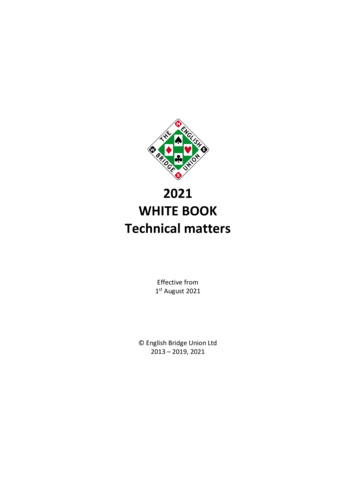
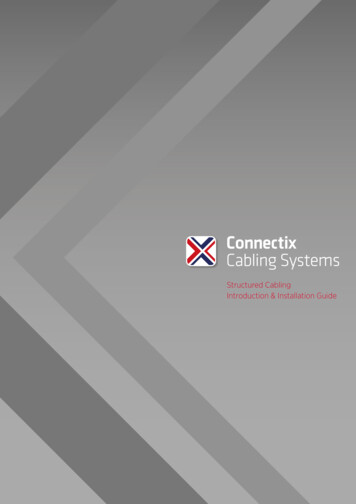
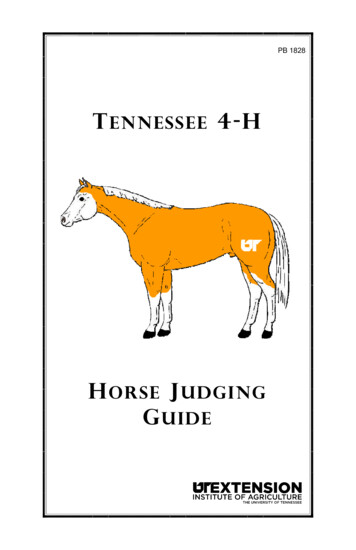
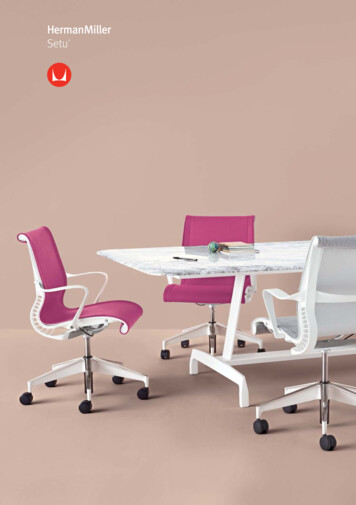
![[CLASS XII CHEMISTRY PRACTICALS]](/img/23/xii-chemistry-practical.jpg)
